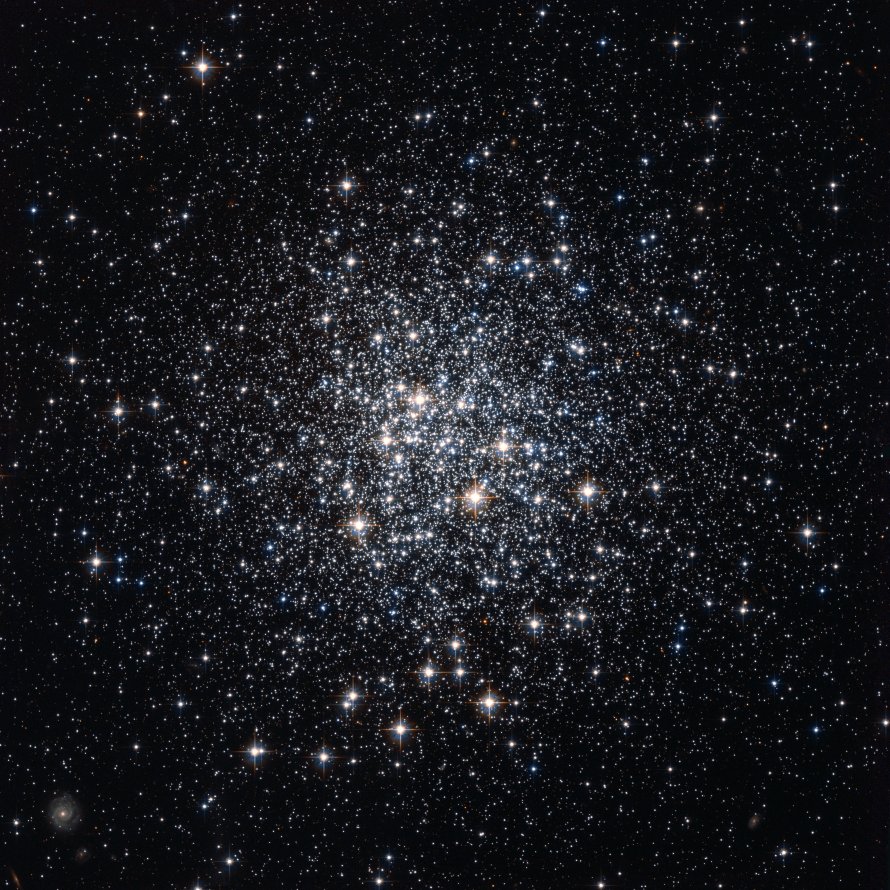M72 (NGC 6981)
Messier 72 (NGC 6981) is a globular cluster located in the constellation Aquarius, in the Galactic Center of the Milky Way Galaxy in the Local Group of galaxies. M72 is 54600 light years away from Earth.
M72 is best viewed during early spring, is magnitude 9.4, and can be viewed with binoculars. M72 is 6.6' in apparent size. For reference, the full moon is 30'.
Observing difficulty: Hard
- Name:
- Type:
- globular cluster
- Constellation:
- Aquarius
- NGC or IC:
- NGC 6981
- Magnitude:
- 9.4
- Viewing:
- binoculars
- Size:
- 6.6'
- Distance (light years):
- 54600 LY
- RA:
- 20h 53.5m
- Dec:
- -12 32'
- Season:
- early spring
- Milky Way location:
- Galactic Center
- Galaxy group:
- Local Group
- Messier Marathon #:
- 108
* The naked eye can see up to magnitude ~7-8 objects under ideal dark sky conditions.
An Exotic Globular Cluster in Aquarius
Messier 72, or M72, also known as NGC 6981, is a globular cluster located in the constellation of Aquarius. The French astronomer Pierre M?chain first discovered it in August 1780, and it was later added to Charles Messier's famous catalogue in October of the same year. Situated in a rich field of galaxies, M72 is one of the more remote globular clusters associated with our Milky Way galaxy.
Characteristics of M72
M72 lies at an impressive distance of about 53,000 light-years from the solar system and roughly 60,800 light-years from the Galactic Center. The cluster extends for about 106 light-years in diameter, making it a medium-sized globular cluster. The spectral characteristics of the stars within M72 suggest a relatively young age for a globular cluster, estimated to be approximately 9.5 billion years.
This cluster hosts a number of variable stars, particularly of the RR Lyrae type. These stars are used as standard candles in astronomy to measure distances, thanks to their consistent and well-understood period-luminosity relationship.
Magnitude and Size
The apparent magnitude of M72 is around 9.3, making it challenging to observe without the aid of a telescope. However, with the right conditions and equipment, it reveals itself as a somewhat faint, round glow. Through larger telescopes, the outer regions of the cluster may begin to resolve into stars.
Finding and Viewing M72
Located in the constellation Aquarius, M72 can be found in the southern sky during the months of August through October. The constellation Aquarius is notable for its pattern of faint stars, with its two brightest stars, Sadalmelik and Sadalsuud, having apparent magnitudes of only around 3.0.
To locate M72, start by identifying the Water Jar asterism, formed by the stars Eta, Zeta, Gamma, and Pi Aquarii. From there, look about 3.5 degrees southeast of Epsilon Aquarii, and you should locate the globular cluster. Given the relative faintness of M72, it's best viewed under dark skies away from city lights.
Through small to moderate telescopes, M72 appears as a faint, blurry spot of light. Larger telescopes will start to resolve individual stars, particularly in the outer regions of the cluster, and provide a more detailed view of this remote globular cluster.
In conclusion, while M72's distance and faintness can make it a challenging target for amateur astronomers, its location within the rich field of Aquarius provides an exciting opportunity to explore one of the Milky Way's more remote globular clusters.



